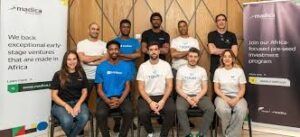Anthropic launched Claude Sonnet 4.5 on Monday, claiming the model can code autonomously for up to 30 hours—more than four times longer than its previous flagship model, Claude Opus 4, which sustained seven-hour coding sessions.
The new model demonstrated the ability to build entire applications, stand up database services, purchase domain names, and perform SOC 2 security audits without human intervention during early enterprise trials, according to Anthropic AI researcher David Hershey.
The launch intensifies competition with OpenAI, whose GPT-5 model recently challenged Anthropic’s developer market dominance. Apple and Meta reportedly use Claude AI models internally, and Anthropic generates significant revenue from API access sold to AI coding applications including Cursor, Windsurf, and Replit.
Cursor CEO Michael Truell said Claude Sonnet 4.5 represents “state-of-the-art coding performance, specifically on longer horizon tasks,” while Windsurf CEO Jeff Wang called it “a new generation of coding models.”
The endorsements matter commercially. Cursor and Windsurf are among the fastest-growing AI coding tools, with Cursor reportedly approaching $100 million ARR. Their willingness to publicly validate Sonnet 4.5’s performance signals that downstream developer tools will likely integrate the model, protecting Anthropic’s API revenue stream.
Anthropic maintains the same pricing as Claude Sonnet 4: $3 per million input tokens and $15 per million output tokens. The decision not to raise prices despite performance improvements suggests Anthropic is prioritizing market share over margin expansion as OpenAI’s GPT-5 applies competitive pressure.
Alongside the model launch, Anthropic released the Claude Agent SDK—the same infrastructure powering its recently launched Claude Code terminal tool. The SDK allows developers to build custom autonomous agents, positioning Anthropic as infrastructure provider rather than just model vendor.
The strategic shift matters for enterprise buyers evaluating build-versus-buy decisions for AI coding tools. If Anthropic’s SDK becomes the standard for agent development, it creates platform lock-in beyond individual model performance comparisons.
Anthropic also launched “Imagine with Claude” as a research preview for Max subscribers, showing the AI model generating software in real time with no predetermined functionality or prewritten code.
Claude Sonnet 4.5 arrives less than two months after Claude Opus 4.1, reflecting production cycles that make it difficult for any company to maintain a meaningful lead.
For investors, the compression creates valuation challenges. Anthropic reportedly raised funding at a $40 billion valuation earlier this year. Sustaining that valuation requires either demonstrating durable model leadership or successfully transitioning from model provider to platform business through tools like the Agent SDK.
The 30-hour autonomous coding capability represents a threshold shift for enterprise deployment. Previous models required human oversight for multi-day projects. If Sonnet 4.5 maintains reliability over extended sessions, it enables use cases like weekend deployments or overnight infrastructure builds—applications where human availability creates project bottlenecks.
Anthropic’s models have emerged as a favorite among developers and enterprises in the last year, largely due to strong performance on software engineering tasks.
That positioning creates strategic risk for AI coding startups building on OpenAI infrastructure. If Anthropic maintains coding superiority, tools like GitHub Copilot (Microsoft/OpenAI) face pressure to support multi-model backends or risk developer churn to Anthropic-powered alternatives.
The competitive dynamic favors vertical integration. Companies like Cursor and Replit that control both the developer interface and model selection can switch providers to optimize performance. Pure model providers like Anthropic must continuously release improvements to prevent commoditization as competitors close performance gaps within weeks or months.








